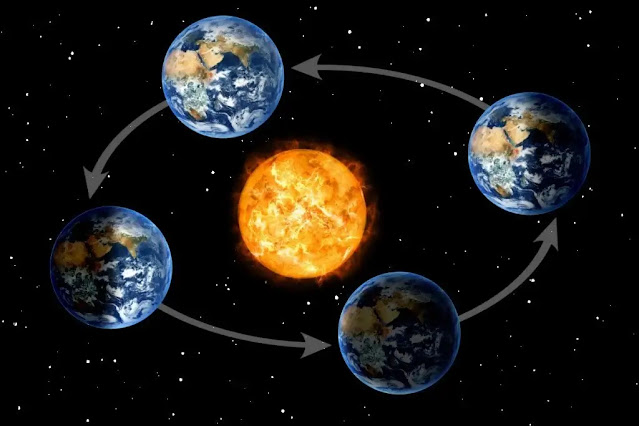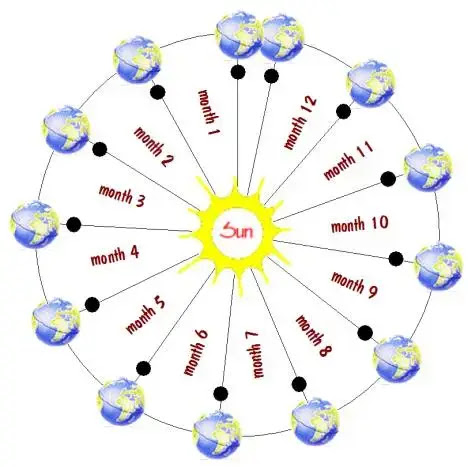Have you ever wondered why we have a leap day every four years? Leap day is an intriguing addition to our calendar system that serves a critical purpose in keeping our timekeeping accurate and aligned with the Earth's orbit around the sun. In this comprehensive article, we will unravel the mysteries surrounding leap day and delve into its profound significance. By understanding the purpose and mechanics behind leap day, we gain insights into the fascinating intricacies of the Gregorian calendar and its relationship with the celestial rhythm of time.
The Gregorian Calendar: A Precise Chronological System
The Gregorian calendar, introduced by Pope Gregory XIII in 1582, stands as a remarkable achievement in the realm of timekeeping. Building upon the foundation laid by its predecessor, the Julian calendar, the Gregorian calendar brought about crucial refinements and adjustments to better align with the Earth's orbit around the sun. It was a response to the growing discrepancy between the calendar year and the solar year, offering a more accurate and reliable system for tracking time.
The Solar Year and its Challenges
To understand the significance of leap day in the Gregorian calendar, we must first grasp the concept of the solar year. The solar year refers to the time it takes for the Earth to complete one full orbit around the sun, approximately 365.24 days. This fraction of a day poses a challenge to our timekeeping systems, as it disrupts the synchronization between the calendar and the astronomical phenomena tied to the changing seasons.
The Gregorian calendar addresses this challenge by incorporating leap day every four years, thereby accounting for the extra fractional day. By making this adjustment, the calendar system maintains a closer alignment with the Earth's revolution, ensuring that seasonal changes are accurately reflected in the calendar.
The refinement of the Gregorian calendar came as a response to the realization that the Julian calendar, established by Julius Caesar, had gradually accumulated a discrepancy between the calendar year and the solar year. This discrepancy became noticeable over the centuries, leading to a misalignment of the calendar with the natural rhythm of Earth's orbit. Pope Gregory XIII recognized the need for a solution and commissioned a reform that would rectify the inaccuracies and restore order to the calendar.
The introduction of the Gregorian calendar involved several key adjustments. Firstly, to account for the additional fractional day, leap day was included every four years. However, this adjustment alone was not sufficient to maintain perfect alignment with the solar year. Thus, further refinements were implemented.
The Gregorian calendar introduced an exception to the leap year rule. Years that are divisible by 100 are not leap years unless they are divisible by 400. By incorporating this exception, the calendar fine-tuned the leap year calculations, resulting in a closer approximation of the solar year.
The transition from the Julian calendar to the Gregorian calendar was not an overnight process. It required a period of adjustment, and different regions adopted the new calendar at different times. In 1582, several Catholic countries, including Italy, Spain, and Portugal, made the switch to the Gregorian calendar. Other countries gradually followed suit, with the process spanning several centuries. By the early 20th century, most countries had adopted the Gregorian calendar as the standard system for timekeeping.
The introduction of the Gregorian calendar and the refinement of leap day calculations were significant milestones in the history of timekeeping. These developments provided a more accurate and reliable system for tracking time, ensuring that our calendars remained closely aligned with the celestial movements that shape our lives.
By incorporating leap day and making adjustments to the leap year rule, the Gregorian calendar became a testament to human ingenuity and our desire to harmonize our man-made systems with the natural rhythms of the universe. Leap day, as a pivotal component of this calendar system, embodies the brilliance and precision of human achievements in measuring time.
Reasons for Why Is There a Leap Day
Earth's Orbit and Revolution
 |
| Earth's orbit around the Sun |
To counter this issue, leap day, also known as intercalary or bissextile day, is added to the calendar approximately every four years. By doing so, we account for the extra fractional day that accumulates during each year, thus ensuring that our calendar remains synchronized with the Earth's revolution around the sun.
Alignment with the Solar Year: Bridging the Gap
1. Discrepancy between the Calendar Year and the Solar Year
The inclusion of leap day in our calendar serves to bridge the gap between the calendar year, which consists of 365 days, and the solar year, which spans approximately 365.24 days. This discrepancy of roughly a quarter of a day may seem insignificant, but over time, it has significant implications for the accuracy of our timekeeping system.
 |
| Solar Year |
The misalignment between the calendar year and the solar year arises due to the fact that the Earth's orbit is not a perfect multiple of 365 days. The slight variation in the length of the solar year necessitates adjustments in our calendar system to ensure that the seasonal changes and astronomical events occur at the expected times.
2. The Need to Adjust the Calendar to Keep It in Sync with Seasons
The changing of seasons is intricately tied to the Earth's orbit and axial tilt. As the Earth completes its revolution around the sun, different regions of the planet experience varying amounts of sunlight, resulting in the cyclical patterns we observe as seasons. For agricultural, cultural, and societal reasons, it is essential that our calendar aligns with these natural phenomena, allowing us to plan activities and events accordingly.
Without the inclusion of leap day, the misalignment between the calendar and the solar year would gradually shift the seasons out of sync. For example, if leap day was not added, over the course of 100 years, our calendar would be approximately 24 days behind the solar year, causing significant confusion and disruption in various domains of life.
Leap Year Rule: The Art of Intercalation
1. Introduction of Leap Year Rules
The implementation of leap year rules is crucial to the proper calculation and placement of leap day within the calendar system. These rules define when a leap year occurs and ensure that the additional day is inserted at the appropriate time to maintain synchronization with the Earth's orbit.
 |
| Leap Year Rules |
The Gregorian calendar utilizes a specific set of rules to determine leap years. According to these rules, a year is a leap year if it is evenly divisible by 4. However, there is an exception to this rule. Years that are divisible by 100 are not leap years, unless they are divisible by 400. This exception ensures that the calendar accounts for the slight discrepancy between the solar year and the whole number of days in a calendar year.
2. The Concept of Intercalation
To Compensate for the Extra Time Intercalation, the process of adding extra time to a calendar, is employed to compensate for the extra fractional day that accumulates during the Earth's revolution. By intercalating leap day, we effectively reconcile the difference between the calendar year and the solar year.
The concept of intercalation dates back to ancient civilizations, where various methods were used to adjust calendars to account for the extra time. In the case of leap day, it is inserted at the end of February, extending the month from 28 to 29 days in leap years. This additional day allows the calendar to "catch up" with the Earth's revolution and maintain alignment with the changing seasons.
The introduction of the Gregorian calendar and the refinement of leap year calculations were significant milestones in the history of timekeeping. These developments provided a more accurate and reliable system for tracking time, ensuring that our calendars remained closely aligned with the celestial movements that shape our lives.
Julian vs. Gregorian Calendar: Historical Development and Impact on Leap Day
1. Historical Development of the Calendar Systems
The Julian calendar, introduced by Julius Caesar in 45 BCE, was the precursor to the Gregorian calendar. The Julian calendar aimed to address the inaccuracies of earlier calendars by introducing leap years every four years. This four-year cycle was a significant improvement over previous systems but did not fully account for the extra fractional day.
Over time, it became evident that further adjustments were needed to keep the calendar in sync with the solar year. In 1582, Pope Gregory XIII introduced the Gregorian calendar as an improvement over the Julian calendar. This transition involved skipping several days to bring the calendar back in line with the seasons. It also refined the rules governing leap years, introducing the exception for years divisible by 100 but not by 400.
2. The Switch to the Gregorian Calendar and Its Impact on Leap Day
The adoption of the Gregorian calendar varied across different regions and countries. Catholic countries were the first to embrace the new system, followed by Protestant countries and others over time. The transition was not without controversy, but eventually, the Gregorian calendar gained widespread acceptance and became the internationally recognized standard for timekeeping.
The switch from the Julian to the Gregorian calendar had a direct impact on leap day. The refinements made in the leap year calculations within the Gregorian calendar ensured a more accurate alignment with the Earth's orbit. This transition marked a significant milestone in the evolution of our calendar system, enhancing its precision and reliability.
By understanding the reasons behind leap day, the intricacies of the Gregorian calendar, and the historical context of its development, we gain a deeper appreciation for the delicate balance between human-made systems and the natural phenomena that shape our perception of time. Leap day, with its calculation and placement, stands as a testament to our ongoing quest for accuracy and harmony in measuring the passage of time.
Leap Day Calculation: Ensuring Calendar Accuracy
Frequency of Leap Years: Maintaining Balance in the Calendar
1. The 4-Year Cycle Pattern
Leap years are calculated based on a repeating pattern known as a 4-year cycle. In this cycle, a leap year occurs every four years. By adding an extra day to the calendar, we compensate for the fractional time that accumulates during each year.
This 4-year cycle is derived from the fact that it takes approximately 365.24 days for the Earth to complete one revolution around the sun. By adding an extra day every four years, we come closer to accounting for that extra fractional day, reducing the discrepancy between the calendar year and the solar year.
2. Exceptions to the 4-Year Rule
While most leap years follow the 4-year cycle pattern, there are exceptions to this rule. To maintain accuracy, there are specific criteria that must be met for a year to be considered a leap year.
Years that are divisible by 100 are generally not leap years, unless they are also divisible by 400. This exception helps refine the leap year calculations by accounting for the slight discrepancy between the solar year and the whole number of days in a calendar year. By omitting leap years in certain cases, we ensure a more accurate alignment with the Earth's orbit.
February 29th Celebration: Unique Traditions and Customs
1. Traditions and Customs Associated with Leap Day
Leap day, being an anomaly that occurs only once every four years, has given rise to various traditions and customs celebrated around the world. These traditions often involve special activities or events that are unique to leap day.
One common tradition is the concept of "leap year proposals." In some cultures, it is believed that on leap day, women have the privilege to propose marriage to their partners. This tradition, which dates back centuries, adds an element of fun and excitement to leap day celebrations.
2. Leap Day Birthdays and Their Unique Significance
Individuals born on leap day, known as "leaplings" or "leapers," face an interesting situation. Since February 29th only occurs once every four years, they celebrate their birthdays on either February 28th or March 1st during non-leap years. This rarity adds a special and memorable aspect to their birthdays, making them stand out from the rest.
Leap day birthdays are often celebrated in a grand manner, with leaplings embracing their unique status and sharing their stories with others. It becomes a source of pride and fascination, as they are part of a select group who can claim such a rare birthdate.
Importance and Practical Implications: Synchronizing Time and Seasons
Astronomical and Scientific Significance: Precision in Timekeeping
1. Maintaining Accurate Astronomical Calculations
Accurate timekeeping is of utmost importance in various scientific fields, particularly astronomy. By incorporating leap day and the rules governing leap years, astronomers and scientists can make precise calculations and predictions regarding celestial events, planetary movements, and astronomical phenomena.
Leap day ensures that astronomical calculations remain accurate and aligned with the actual positions and motions of celestial bodies. It allows scientists to map out the intricacies of the universe and contribute to our understanding of the cosmos.
2. Impact on Fields Such as Astronomy, Space Exploration, and Timekeeping
The inclusion of leap day has practical implications for fields like space exploration and satellite communications. Precise timekeeping is crucial for coordinating spacecraft missions, satellite operations, and global positioning systems (GPS). By accounting for the extra fractional day in our calendars, we ensure that the timing and synchronization of these systems remain accurate and reliable.
Moreover, leap day contributes to the overall accuracy of timekeeping devices and systems used in everyday life. From atomic clocks to digital watches, the inclusion of leap day helps maintain synchronization with the Earth's orbit, enabling us to track time with precision.
Calendar Accuracy and Seasons: Cultural and Agricultural Significance
1. Aligning the Calendar with Changing Seasons
Leap day plays a crucial role in aligning our calendar with the changing seasons. By accounting for the extra time it takes for the Earth to complete a revolution, we ensure that the transition from one season to another occurs at the expected time.
This alignment has significant cultural and practical implications. It allows societies to plan and organize events, festivals, and celebrations based on the seasons. For example, agricultural activities, such as planting and harvesting, rely on the accurate timing of seasons. Cultural festivals and holidays are also tied to specific times of the year and require a calendar system that accurately reflects the natural rhythm of the Earth.
2. Facilitating Agricultural Planning and Cultural Events
Leap day's inclusion in the calendar facilitates agricultural planning and helps farmers synchronize their activities with the seasons. By having an accurate calendar that accounts for the Earth's revolution, farmers can determine the optimal timing for planting crops, tending to livestock, and managing agricultural tasks.
Culturally, the presence of leap day adds uniqueness and significance to our lives. It sparks curiosity, prompts discussions, and fosters a sense of wonder about the interplay between time, nature, and human society.
Conclusion
Leap day, with its calculation and placement within the calendar system, serves multiple purposes. It aligns our calendar with the Earth's orbit, accounts for the extra fractional day in the solar year, and ensures that the changing seasons are accurately reflected in our timekeeping system.
The evolution of the calendar, from the Julian to the Gregorian system, demonstrates humanity's pursuit of precision and accuracy in measuring time. Leap day's inclusion and the refinement of leap year calculations within the Gregorian calendar showcase our continuous efforts to harmonize human-made systems with the natural phenomena that govern our lives.
Leap day's significance extends beyond its numerical value. It symbolizes the intricate relationship between time, science, culture, and nature. By understanding its role and the reasons behind its existence, we gain a deeper appreciation for the calendar's accuracy and the profound impact it has on various aspects of our lives.
Leap day stands as a testament to the ingenuity and adaptability of our calendar system. It represents the ongoing quest for precision, alignment, and synchronization with the Earth's orbit. By comprehending the reasons for leap day and its historical and scientific context, we can marvel at the complexity of timekeeping and the remarkable journey of human civilization in its measurement of time.









0 Comments